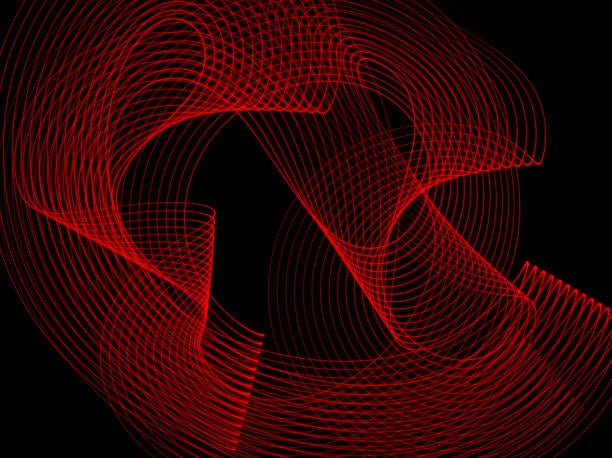
Red & Infrared Light, Mitochondria, and Aging
Professor Glen Jeffery’s work centers on how specific long wavelengths of light, especially deep red around 670 nm, interact with mitochondria and show measurable effects in aging tissues. The thread is straightforward: mitochondria are light-sensitive; aging degrades mitochondrial efficiency; precise long-wavelength exposure can acutely improve function in contexts where mitochondria are energy-limited.
Mitochondria, light absorption, and why wavelength matters
Mitochondria produce ATP through the respiratory chain. A key chromophore in this chain, cytochrome c oxidase (Complex IV), has absorption bands in the red and near-infrared range, which is the mechanistic basis for photobiomodulation effects on membrane potential, redox signaling, and ATP production in stressed or aging cells. High-quality reviews outline these pathways and the dose- and context-dependence of the response (Zein 2018; Hamblin 2018).
Human vision: rapid, time-of-day sensitive effects with 670 nm
In adults over ~40, a brief exposure to 670 nm deep red can improve cone-mediated color contrast sensitivity, with negligible effect in younger adults. The original human study showed meaningful gains after daily exposures, with larger improvements on the energy-vulnerable tritan axis; later work demonstrated that a single three-minute exposure can shift color contrast for about a week when delivered in the morning. These data anchor the aging/energy hypothesis in the retina and emphasize timing (Shinhmar et al., 2020; Shinhmar et al., 2021; UCL news brief).
Metabolism: acute blood-glucose lowering after 670 nm exposure
Jeffery’s group reported that a single 15-minute 670 nm exposure before an oral glucose tolerance test reduced post-prandial blood glucose and blunted the maximal glucose spike in healthy humans. The working model is simple: mitochondria increase energy production, immediate glucose demand rises, and circulating glucose dips accordingly. This is early translational evidence, but it supports a systemic metabolic lever via light-responsive mitochondria (Powner et al., 2024; J. Biophotonics).
Systemic signaling and inflammation
Photobiomodulation can modulate cytokine expression and immune tone beyond the illuminated site, consistent with circulating signals and network-level effects reported across tissues. Reviews document anti-inflammatory patterns and immune modulation after red/near-infrared exposures, though directionality may vary by model, dose, and timing (Shamloo 2023; Sá 2024). Jeffery-linked animal work shows that 670 nm can alter retinal and serum cytokine profiles, underscoring systemic crosstalk that still needs dose–response mapping (Shinhmar et al., 2023).
Cognition and the brain: from flies to humans
In Drosophila, 670 nm exposures increase ATP, reduce ROS, and preserve locomotor, sensory, and cognitive functions with age, with lifespan extensions reported under specific paradigms (Weinrich et al., 2017; Begum et al., 2015). Human transcranial near-infrared studies, using PFC-targeted 1064 nm, show improvements in attention, working memory, and learning with measurable hemodynamic and electrophysiological shifts; these are not identical to ocular 670 nm protocols, but they reinforce the mitochondrial light-response in neural tissue (Barrett & Gonzalez-Lima 2013; Zhao et al., 2022; Qu et al., 2022; Liu et al., 2023).
Retina and animal models: mechanistic support
Mouse studies show that repeated 670 nm exposures can improve ERG a- and b-waves in aged retinas and increase ATP via cytochrome c oxidase absorption with reduced inflammatory markers, aligning with human psychophysics and the mitochondrial mechanism (Sivapathasuntharam et al., 2017; Begum et al., 2015).
Built light vs. natural light: spectra, timing, and missing wavelengths
Most common white LEDs are blue-pump devices with minimal deep red and near-infrared emission, unlike sunlight’s continuous spectrum. That spectral skew has circadian implications and removes long-wavelength content relevant to mitochondrial photoreception. Technical reviews note these spectral gaps, and circadian literature emphasizes the potency of short-wavelength light at the wrong times of day (Sliney 2016; Lucas et al., 2013). Modern low-e glazings designed to reduce heat often reflect or block significant portions of the near-infrared band, further reducing indoor exposure to long wavelengths found outdoors (Berardi 2018; Han 2023).
Wound physiology: early clinical signals
NASA-linked clinical work two decades ago reported accelerated wound healing with red/near-infrared LED arrays, consistent with the mitochondrial and anti-inflammatory signaling model that later reviews elaborated. Parameters and devices have evolved since then, but the wound literature remains one of the earliest clinical footholds (Whelan et al., 2001).
How to read this field with precision
The signal is wavelength-, dose-, tissue-, and time-dependent. In the eye, 670 nm morning exposures are not interchangeable with evening exposures. In brain studies, 1064 nm transcranial protocols are not interchangeable with retinal 670 nm. Systemic effects exist but are not uniform; cytokine direction can invert with dose and context. The path forward is individualized timing and minimal effective dosing aligned to the tissue and endpoint you care about.
Disclaimer: this article summarizes published research and is not medical advice. Device class, power density, dose, and timing matter. If you choose to experiment, do so under appropriate guidance and track your own terrain response.
Further viewing
Interviews and explainers featuring Professor Glen Jeffery can complement the primary studies above. Use them as context; ground your practice in the peer-reviewed data linked here.
